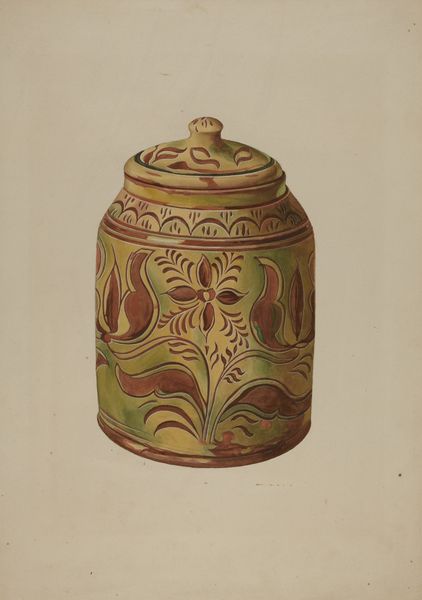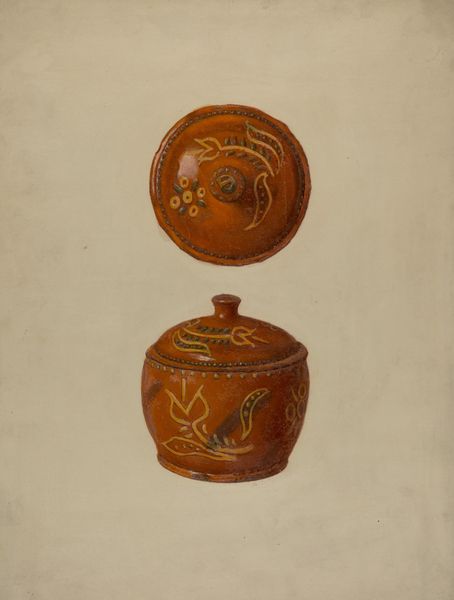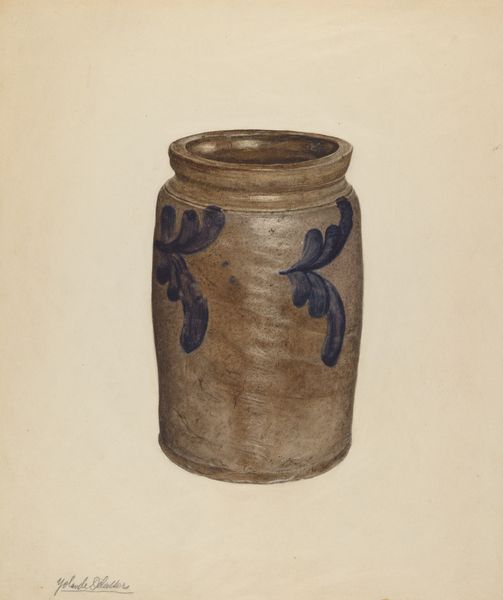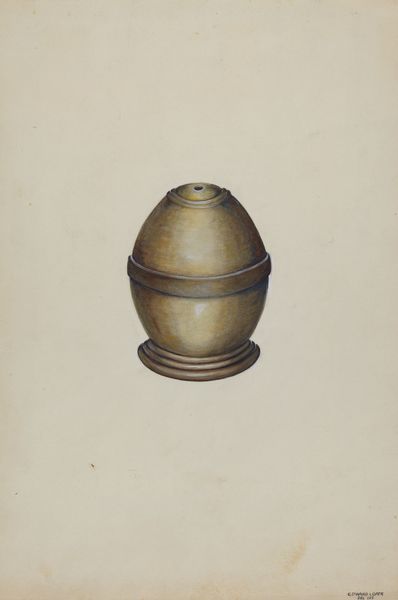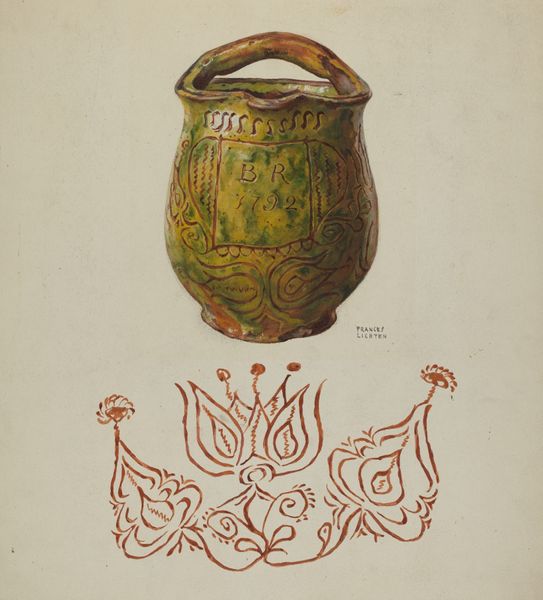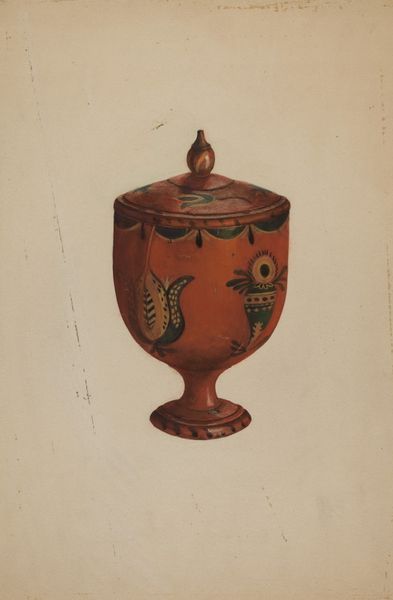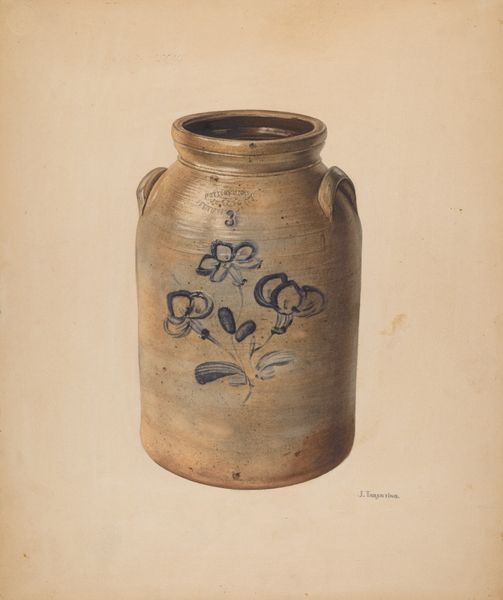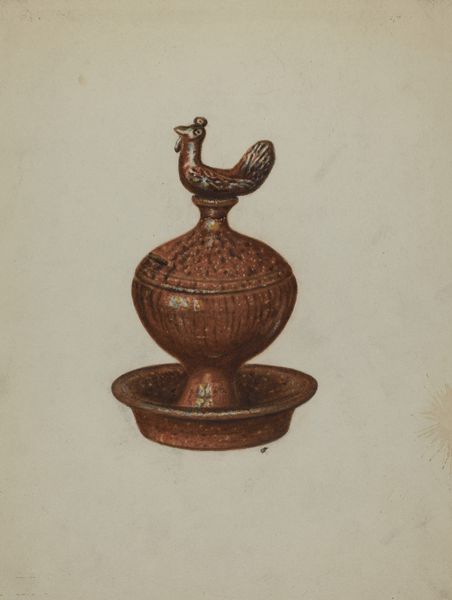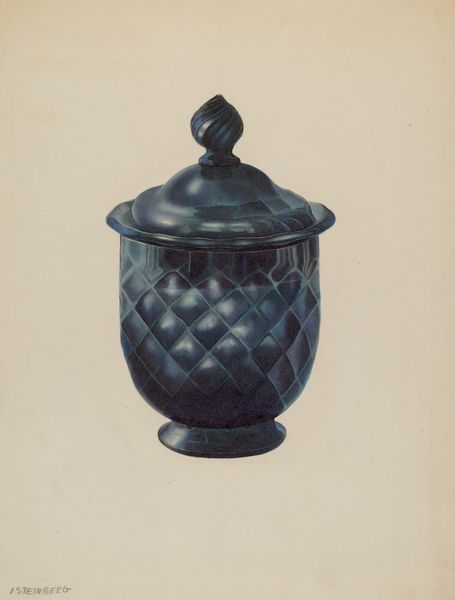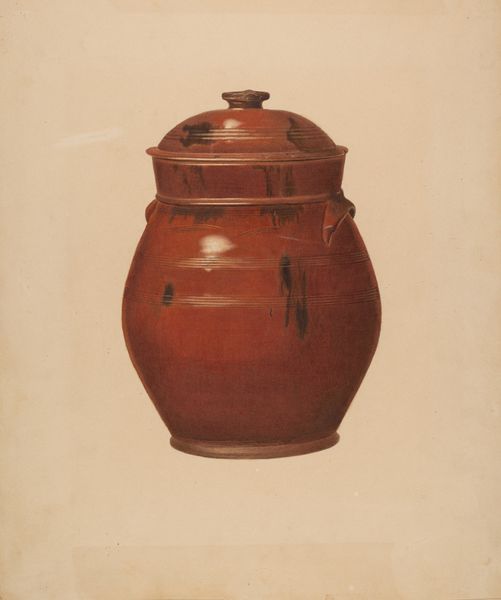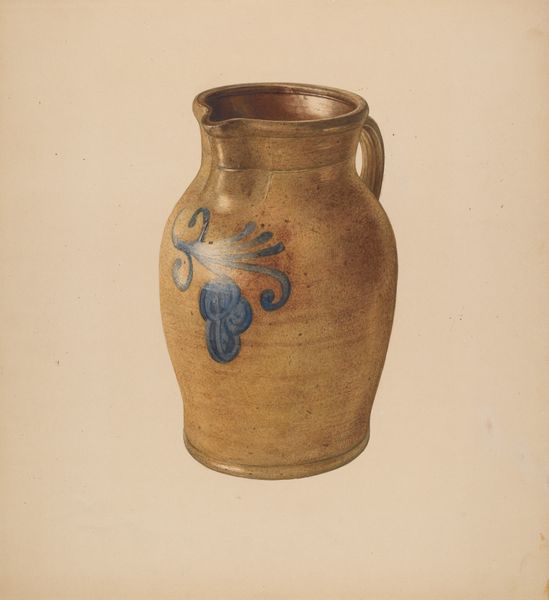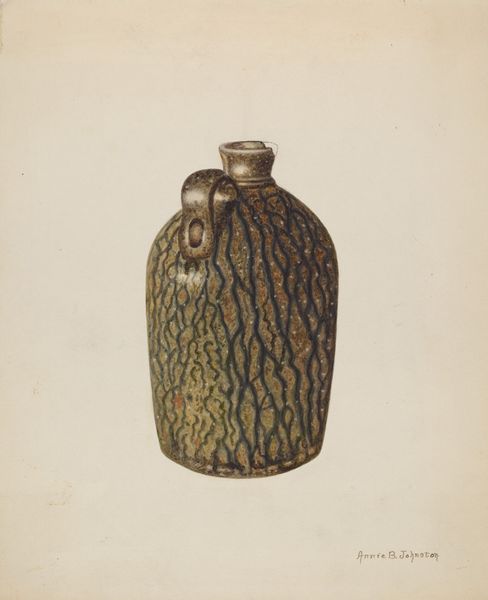
ceramic, earthenware
#
ceramic
#
earthenware
#
folk-art
Dimensions: overall: 33 x 30.8 cm (13 x 12 1/8 in.)
Copyright: National Gallery of Art: CC0 1.0
Editor: This is William L. Antrim’s “Pa. German Covered Jar,” made around 1938 from ceramic earthenware. I’m struck by how simple and homey it feels, yet the floral designs give it an unexpected elegance. What are your initial impressions of it? Curator: My eye is drawn immediately to the repeated floral and tulip motifs. In Pennsylvania German folk art, the tulip, especially, wasn't merely a pretty decoration. It’s an enduring symbol – frequently representing faith, love, and hope for prosperity. How do you think those concepts relate to the function of a covered jar? Editor: I guess it makes sense; people would store things they valued inside—maybe food preserved with love? A container literally holding cherished resources. Curator: Precisely! And consider the eight-petal flower that encircles the jar. The number eight often signifies rebirth or renewal in various traditions. This, coupled with the earthiness of the earthenware, points to cycles of life and abundance—concepts deeply embedded in folk art meant to connect the everyday to the sacred. Does that make you see the design differently? Editor: Absolutely! It's more than decoration; these are layered symbols adding depth to a common object. It’s like the object is speaking to you, sharing a community’s values. Curator: Visual symbols are a powerful form of communication, a shorthand that preserves and transmits cultural memory through generations. Editor: So, this jar isn’t just storing food; it's holding history and beliefs. I’ll never look at folk art the same way again. Curator: And hopefully, understanding the symbols enhances your appreciation of this cultural artifact.
Comments
No comments
Be the first to comment and join the conversation on the ultimate creative platform.
